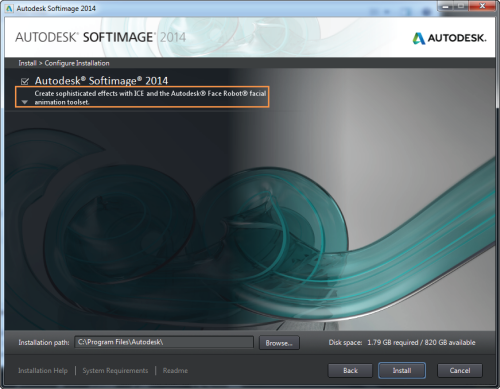
#Softimage 3d linux software

The Softimage|3D feature set was divided between five menu sets: Model, Motion, Actor, Matter and Tools, each corresponding to a different part of the 3D production process: Mental Ray 2.1, Surface Continuity Manager, DropPoints & SlidePoints, GoWithTheFlowĪdded multi-UV texturing, vertex colors.
#Softimage 3d linux plus
New selection & viewing tools, RenderMap, Nintendo 64 supportĪdded animation sequencer, polygon/color reduction toolsįirst release by Avid Technology, Plus & Performance options Introduced Extreme edition (particles, metaballs, mental ray) Introduced Actor module, IK, constraints, deformation latticesĪdded clusters, weighted envelopes. Release history Versionīeta debuted at Siggraph '88, v1.0 commercial release in 1989 Because of Softimage|3D's entrenched user base, minor revisions continued until the final version of Softimage|3D, version 4.0, was released in 2002. Development was delayed during a 1998 acquisition by Avid Technology, and in the summer of 2000 Softimage|3D's successor was finally released as Softimage XSI. began developing a successor to Softimage|3D codenamed "Sumatra," which was designed with a more modern and extensible architecture to compete with other major packages like Alias|Wavefront's Maya. 3D paint functionality was added a year later in version 3.7. Softimage|3D Extreme 3.5, released later that year, included particle effects and the mental ray renderer, which offered area lights, ray tracing, and other advanced features.
#Softimage 3d linux windows
The first Windows port of Softimage|3D, version 3.0, was released in early 1996. with the intention of introducing high-end 3D animation software to its Windows NT platform, and subsequently renamed it "Softimage|3D." In January 1995, Softimage|3D was announced as the official 3D development tool for the Sega Saturn.

In 1994, Microsoft acquired Softimage, Co. Its character animation toolset expanded substantially with the addition of inverse kinematics in version 2, which was used to animate the dinosaurs in Jurassic Park. Softimage Creative Environment was adopted by major visual effects studios like Industrial Light & Magic and Digital Domain for use in their production pipelines, which also typically included software from Alias Research, Big Idea Productions, Kroyer Films, Angel Studios, Walt Disney Feature Animation Inc., and Pixar Animation Studios Inc. The software was initially demonstrated at SIGGRAPH in 1988 and was released for Silicon Graphics workstations the following year as the Softimage Creative Environment™.

Most of the big shops are on Linux, that's true, but that also normally means that, unless you do dev or pipeline work, you're also uninvolved with the OS since it's usually wrapped to the point where all you have to deal with is basic shell operation.In 1986, National Film Board of Canada filmmaker Daniel Langlois, in partnership with software engineers Richard Mercille and Laurent Lauzon, began developing an integrated 3D modeling, animation, and rendering package with a graphical interface targeted at visual artists.

It's also a myth that the majority of film 3d is done on Linux. While I'd rather chew on glass than using windows if offered the alternative (sadly a couple places I worked for using windows wouldn't let me migrate the pipeline to linux even if I promised to chew on a royal pint glass) I can't say this seems such a big deal if you are determined to learn XSI in particular. Linux is also a much harder platform to support, and it's easier for soft to guarantee an artificially uniform platform like windows for something that doesn't exactly reap in loads of cash Probably because to learn a software the OS platform doesn't really matter?


 0 kommentar(er)
0 kommentar(er)
